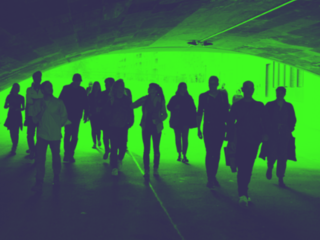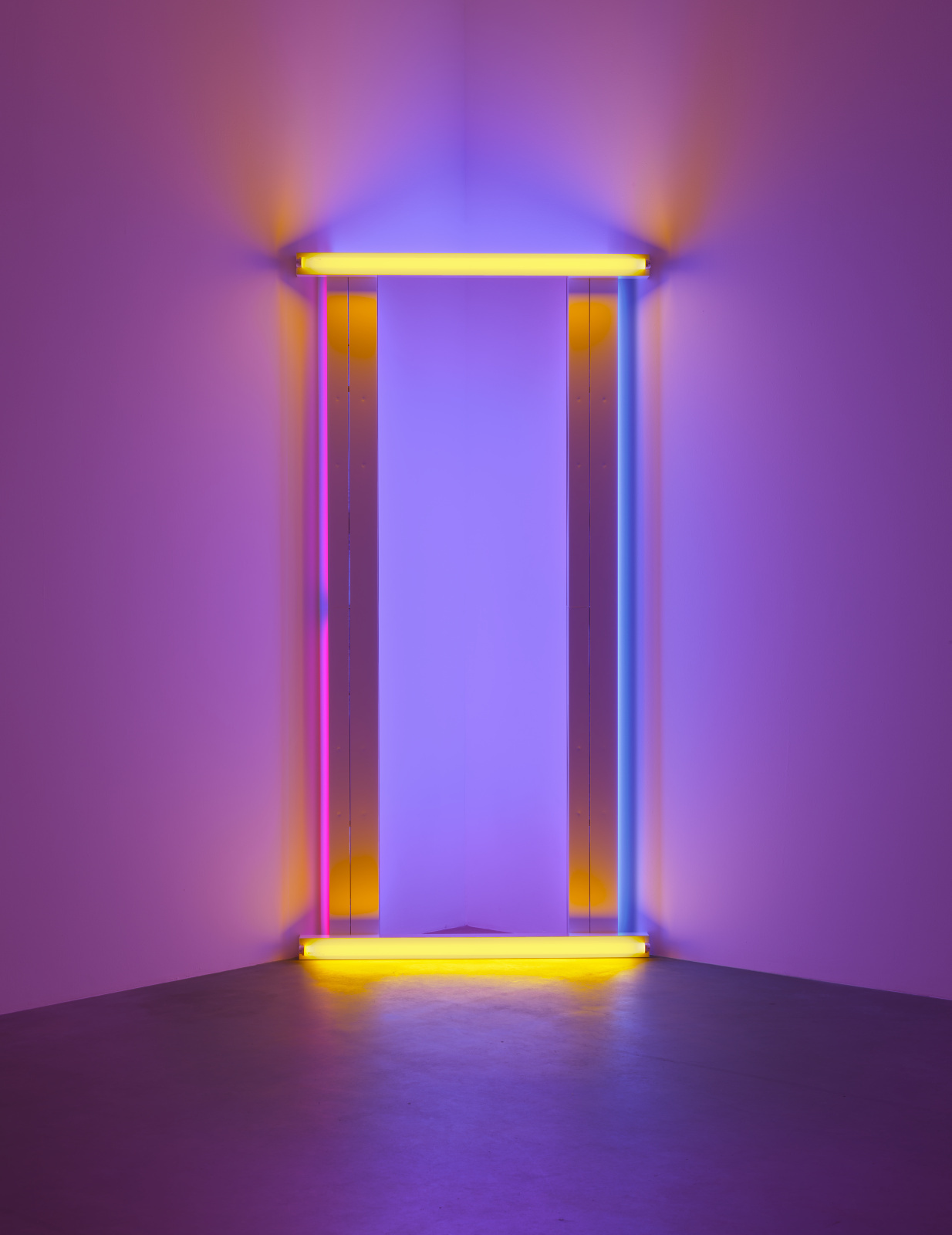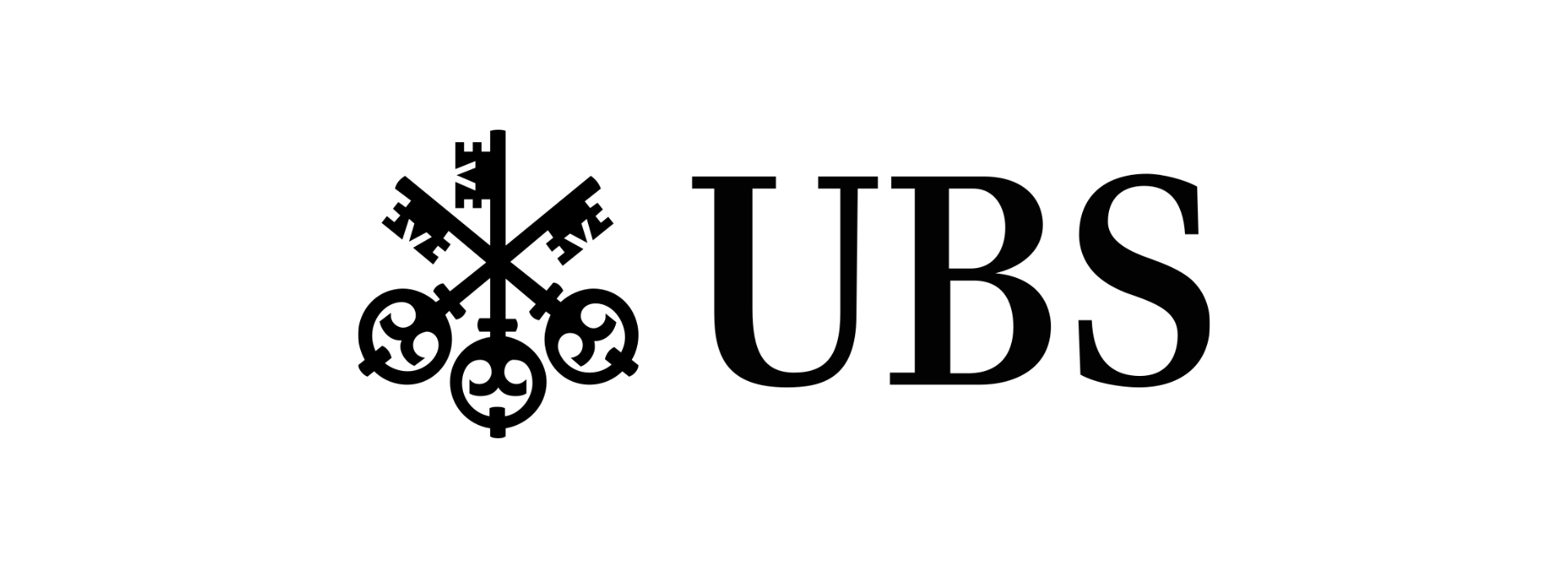Dan Flavin
Dédicaces en lumière
Lorsqu’en 1963 l’artiste américain Dan Flavin (1933–1996) installe au mur de son studio un banal tube fluorescent penché et lui donne le statut d’œuvre d’art, c’est un geste radical – qui l’est resté. Il faisait ainsi entrer les produits commerciaux dans le domaine artistique, s’inscrivant dans l’air du temps : on était à l’aube du minimalisme, qui cultivait la réduction à l’essentiel, l’objectivisme et la déclinaison en séries. Ironie du sort, bien que Flavin, artiste autodidacte, ne se soit jamais considéré comme relevant de ce courant artistique, il est devenu malgré lui son représentant le plus flamboyant.
À partir du début des années 1960, il crée avec des tubes fluorescents ce qu’il nomme des «situations», qu’il développe en séries et dans de grandes installations. Son matériau étant de facture industrielle, les couleurs et les dimensions sont prédéfinies. En pénétrant dans le flot de lumière, l’observateur devient partie intégrante des œuvres ; la salle et tous les objets qui s’y trouvent entrant en relation l’une avec les autres, il se retrouve immergé dans le phénomène artistique qui lui procure une expérience sensuelle, presque spirituelle.
Flavin «libère» ainsi la couleur de la bidimensionnalité de la peinture. Si, jusqu’ici, on a généralement vu dans son art avant tout la dimension minimaliste et industrielle et admiré la beauté de sa simplicité, la grande exposition du Kunstmuseum Basel se propose d’attirer l’attention sur un aspect qui passe souvent inaperçu : le fait que ses œuvres, bien que dépourvues de la signature directement reconnaissable d’un artiste, renferment souvent dans leur titre une allusion à quelque chose de concret, par exemple aux atrocités de la guerre ou à la violence policière, ou sont dédiées à d’autres artistes –c’est le cas de untitled (in memory of Urs Graf), qui plonge chaque soir la cour intérieure du Hauptbau du musée dans une lumière multicolore.
Les commissaires de l’exposition ont examiné cette stratégie narrative à la lumière de divers travaux choisis dans l’ensemble de la production de Flavin, conviant le visiteur à un parcours sensuel d’une œuvre tout à fait originale.
Dan Flavin’s dedications
Événements pour cette exposition
NEUBAU
14:00–15:00
Visite guidée de l'exposition «Dan Flavin. Dédicaces en lumière»
Coût: Entrée + CHF 5.

RENDEZ-VOUS AM MITTAG
NEUBAU
12:30–13:00
Rendez-vous am Mittag: «Dan Flavin» und Basel. Eine unerwartete Liaison
En allemand. Mit der Assistenzkuratorin Olga Osadtschy. Kosten: Eintritt.

NEUBAU
14:00–15:00
Führung in der Ausstellung «Dan Flavin. Widmungen aus Licht»
En allemand. Kosten: Eintritt + CHF 5.

NEUBAU
14:00–15:00
Guided tour of the exhibition "Dan Flavin. Dedications of Light"
En anglais. Costs: Admission + CHF 5.

NEUBAU
14:00–15:00
Führung in der Ausstellung «Dan Flavin. Widmungen aus Licht»
En allemand. Kosten: Eintritt + CHF 5.

Am Unteren Rheinweg 144, 4057 Basel
19:30–21:30
Walkshop 3: Wem gehört die Stadt?
En allemand. Mit Jürgen Buchinger von «Verein Stadt für Alle». Die Stadt verändert sich ständig. Von den Veränderungen betroffen sind auch Menschen, die in die Entscheidungen um ihren Lebensraum nicht eingebunden wurden. Im Rundgang mit dem Verein Stadt für Alle beleuchten wir ein paar dieser Veränderungen im Matthäusquartier und fragen uns, welche Vorstellungen von Stadt ihnen zugrunde liegen. Kostenlose Teilnahme, Ticket erforderlich via Ticketlink.

Treffpunkt: Esplanade au 144 Unteren Rheinweg, 4057 Bâle
NEUBAU
14:00–15:00
Führung in der Ausstellung «Dan Flavin. Widmungen aus Licht»
En allemand. Kosten: Eintritt + CHF 5.

RENDEZ-VOUS AM MITTAG
NEUBAU
12:30–13:00
Rendez-vous am Mittag: «Dan Flavin»
En allemand. Mit der wissenschaftlichen Assistentin Elena Degen. Kosten: Eintritt.

NEUBAU
14:00–15:00
Führung in der Ausstellung «Dan Flavin. Widmungen aus Licht»
En allemand. Kosten: Eintritt + CHF 5.

NEUBAU
14:00–15:00
Visite guidée de l'exposition « Dan Flavin. Dédicaces de lumière »
Coût : entrée + CHF 5.

NEUBAU
14:00–15:00
Führung in der Ausstellung «Dan Flavin. Widmungen aus Licht»
En allemand. Kosten: Eintritt + CHF 5.

NEUBAU
14:00–15:00
Guided tour of the exhibition "Dan Flavin. Dedications of Light"
En anglais. Cost: Admission + CHF 5.

NEUBAU
14:00–15:00
Führung in der Ausstellung «Dan Flavin. Widmungen aus Licht»
En allemand. Kosten: Eintritt + CHF 5.

NEUBAU
14:00–15:00
Führung in der Ausstellung «Dan Flavin. Widmungen aus Licht»
En allemand. Kosten: Eintritt + CHF 5.

VISITE GUIDÉE PAR LA COMMISSAIRE D'EXPOSITION
NEUBAU
18:30–19:30
Curator guided tour "Dan Flavin"
En anglais. With the assistant curator Olga Osadtschy. Costs: Admission + CHF 5.

HAUPTBAU Innenhof
18:00–20:00
Walkshop 4: The Shadow and the Heart
En anglais. With Valerio Rocco Orlando, artist and Research Fellow at the University of Basel, Department of Urban Studies. Age: From 16 years. If we consider art as a tool for imaginative and critical thinking, we can look at the city from a different perspective, understand it more and become aware of what remains in the shadows. In dialogue with a group of students of the Urban Studies Masters from the University of Basel, Valerio Rocco Orlando, artist and researcher, will activate a walkshop in the city of Basel to give voice to stories that take place in the margins of society, and bring inhabitants into the heart of urban life. Participation free of charge, ticket required via ticket link.

Treffpunkt: Kunstmuseum Basel | at the entrance of the Hauptbau
NEUBAU
14:00–15:00
Führung in der Ausstellung «Dan Flavin. Widmungen aus Licht»
En allemand. Kosten: Eintritt + CHF 5.

NEUBAU
14:00–15:00
Visite guidée de l'exposition « Dan Flavin. Dédicaces de lumière »
Coût : entrée + CHF 5.

RENDEZ-VOUS AM MITTAG
NEUBAU
12:30–13:00
Rendez-vous am Mittag: «Dan Flavin»
En allemand. Mit der Assistenzkuratorin Olga Osdatschy und wissenschaftlichen Mitarbeiterin Elena Degen. Kosten: Eintritt.

NEUBAU
14:00–15:00
Führung in der Ausstellung «Dan Flavin. Widmungen aus Licht»
En allemand. Kosten: Eintritt + CHF 5.

HAUPTBAU Innenhof
21:00–23:00
Walkshop 5: Projecting Perceptions | An unofficial institutional critique
En anglais. What lies in the shadows of Kunstmuseum Basel and what needs to be illuminated? Beyond its acclaimed collection and exhibitions, the Kunstmuseum Basel thrives on the often unseen efforts and intricate workings that maintain its influence and legacy. In this walkshop, we want to question and uncover these vital yet hidden aspects of the museum’s operation. The Unofficial Hiking Society AG invites you to a night tour around the museum to shed light not only on the façade but also on unofficial narratives of the institution.

Treffpunkt: Kunstmuseum Basel | at the entrance of the Hauptbau




